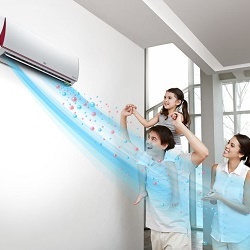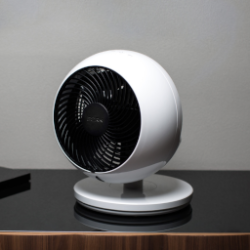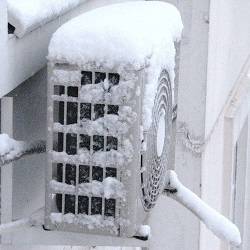Self-made solar water heaters
If you managed to visit the southern countries, then, for sure, you often noticed the structures standing on the roofs of houses. The guides explained that these are solar panels for water heating and home heating. As well as abroad, we also have a progressive population alternative energy sources. A solar-powered water heater is one such successful invention that can fully function even in winter.
Content
How does the solar energy in the device
The sun is a very powerful and, most importantly, an endless source of heat energy.Nobody takes money for its use, and therefore it is worth considering how to use this advantage for your own benefit. Factory taxes water heaters of a solar boiler can cost a considerable amount. If you understand the principle of operation of such a device, you can do something similar with your own hands. Although in fact there are several examples of such a device.
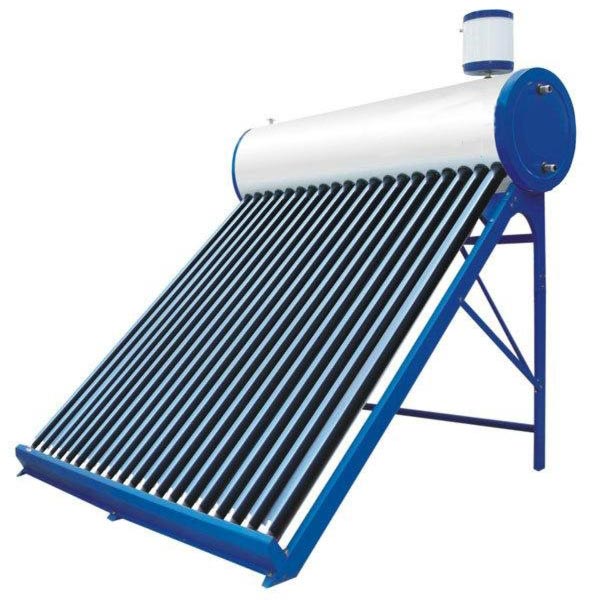
Factory option
Before you understand how to make a solar water heater with your own hands, you must have an idea of the principle of operation of such a unit. It is possible to disassemble the design by analogy of the solar factory water heater.
- In appearance, the unit resembles a battery, which is assembled from individual components. Elements in it are represented by tubes made from quartz glass like the well-known lamps. It is this material that is able to miss ultraviolet waves (which ordinary glass cannot). This ability allows you to convert solar energy even in the non-solar time of the year.
- Inside each of these tubes, another is hidden — black in color with the substance (working body), which will evaporate under certain temperature conditions.
- Inside the tubes absolute vacuum - this avoids heat loss.
- The ends of each of these parts are immersed in special collectorthrough which heated water flows.
How does the device
The functioning of this whole idea takes place according to the following algorithm:
- The sun's rays turn the working body into steam substancewhich rises to the top of the flask.
- The flow of water will be heated through the wall by the thermal energy that the working fluid will give it.
- Having fulfilled its mission, the vapor becomes liquid again and flows down, where everything is safely repeated.
- Solar storage standard water heater is connected to the coil, and that leads to the boiler of the entire home heating system.
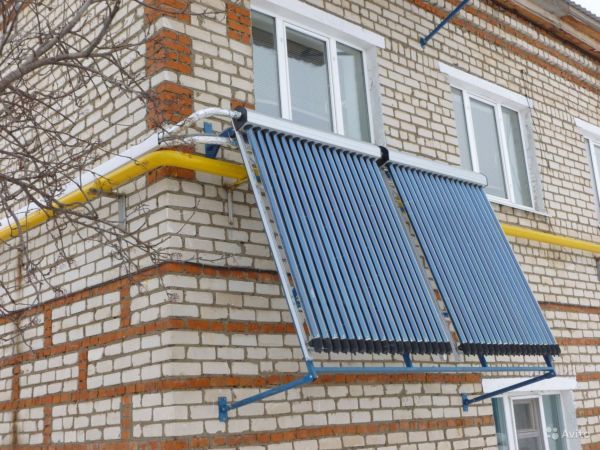
Other heat transfer options
It is clear that in the above case, no amateur will not show. However, there is another option for a free-flow solar boiler. Here heat transfer is direct: Copper coil fits into a rectangular enclosure. Next, it connects to the tank drive. Water will circulate here in a natural way and immediately heat up from the rays of the sun,increasing the heat and overall content of the entire storage tank. The coil tube is pressed into a metal plate that is dark in color. It has additional protection against precipitation with durable glass.
There are also disadvantages here - such a construction will work well only in cloudless sunny weather.
Finally, you can simply connect the solar panels to an ordinary water heater. This design is very expensive in execution, but can work all year round.
Self-made solar water heaters
The desire for an environmentally friendly approach to home heating is commendable - especially since you can make such a system with your own hands. Consider interesting options for the practical implementation of such structures, and how effective home-made solar water heaters.
Simple solar water heater
A simple solution would be to install one (maximum two) black tanks on the roof of a house. A domestic water mains is connected to them - it means that with good sun warm water will flow right into the shower room (in the summer, in the heat, the heating will occur quickly).
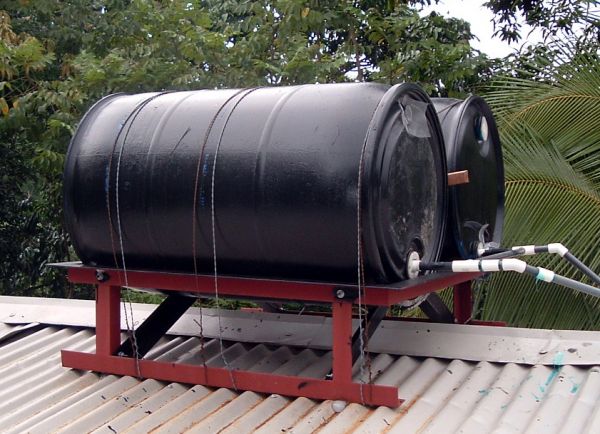
Another simple solar boiler make from shallow, filled with water trough, which is closed by a transparent lid. This also includes the following water components:
- cool water pipe;
- overflow pipe;
- valve part;
- heated water release.
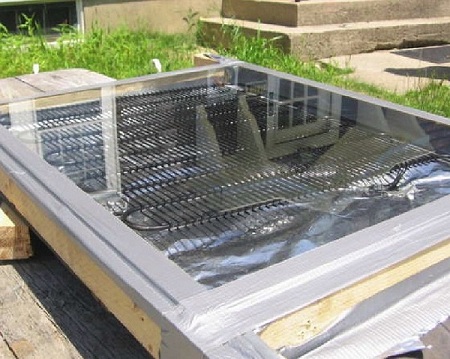
In both cases there are significant shortcomings:
- The inefficiency of a simple tank in the clouds.
- The trough heater should be filled every morning, covering it. When the sun is hidden behind the clouds, you should evaluate the degree of heated water and drain it for further use.
- A flat device like a trough is bad in that it needs hold horizontally. We do not live in the tropics, which means that in winter the sun rises high above the horizon, the efficiency of this device will decrease.
It is much more effective to provide for an additional installation of the collector, even if it is self-made. Having determined the dimensions of the heat sink, it is necessary to make a housing where the coil is placed. Topical thermal insulation issue - that is why the case for the coil is better to make wooden. The second point - the insulation of the rear wall (preferably foam).
How to collect the heat receiver
The simplest solar water heater can be made with your own hands according to the scheme of the following components:
- storage tank;
- feed capacity;
- collector.
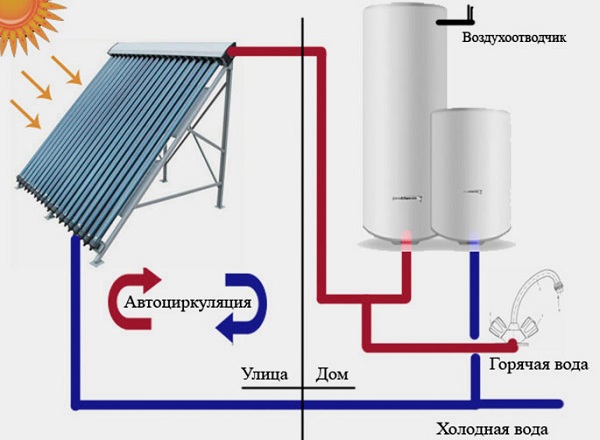
Experts advise not to install a separate pump - water should circulate naturally. But in order to achieve this, the tank should be installed above the heat sink, and the feed tank should be above the accumulator. Another practical recommendation is to warm the tank with heated water. Any material in rolls will work here.
To function in an independent mode (when it is not necessary to add and regulate), it is best to install float valve in the second tank. This element will respond to a decreasing water level. It is necessary to lead a water pipe to its branch pipe. What will it give? When content is consumed in the main tank, cold water will be supplied to its lower zone.
However, we must not forget about the installation of another pipe - vertical: it will release the air. Consequently, this detail should be raised to a greater height.
How to choose the right material
There are different versions of the source from which you can make a heat exchanger. Among them:
- copper tubes;
- black plastic pipes;
- sections of flat steel radiators;
- aluminum pipes;
- black rubber hose;
- heat exchanger remaining from the old fridge.
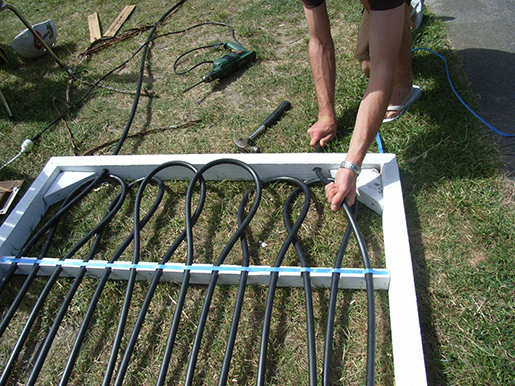
What should the heat exchange surface itself have for such a coil? In the case of steel radiators it should be based on their size, but in order not to make the case heavier, no more than two panels are installed. With other materials, everything will have to count on the spot.
Body can be made of plywood and wooden boards. On the front side, you should use a durable and transparent polycarbonate, which will look as good as glass. The very same storage tank is made of sheet material. And even better will be to buy a finished container. It is recommended to use as connecting pipes. polymeric (well suited from metal-plastic).
Features of self-made solar water heaters
The advantages of a self-made boiler are obvious:
- full load operation as long as possible;
- payback of initial investments in materials;
- fuel economy;
- the product is immediately ready for operation.
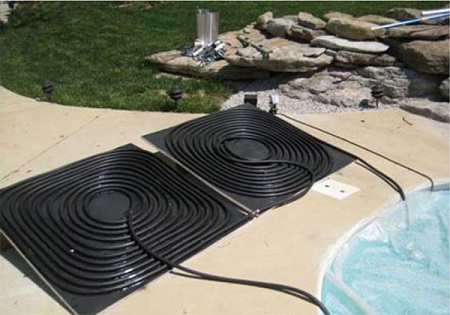
However, all these aspects will turn into positive under important conditions.
- Exact setting of parameters of the device. The design load should approach standard daily consumption.
- To ensure a constant load on hot water, you can install auxiliary heater. It is recommended to turn it on if the solar does not provide the desired load. This element is needed to eliminate the difference in water temperature.
- It is important to properly distribute the load, one of the parameters of which is the regulation of the flow rate of water.
- If you plan to use water not immediately, then you need to tank additional heat insulation. The last point also applies to cloudy days (the thickness of the insulation should be considered more).
- The heat sink coating should increase its absorptive capacity (the simplest can be made with black paint, ideally it is better to apply selective).
- The tank should hold a supply of hot water for two days.
- Tubes running from the collector to the tank should be minimal in length and well insulated to support temperature overshoot.
- Cold water inlet pipe to the collector should be located at the bottom of the tank. The heated water, on the contrary, goes to the top.Above the hole for the hot water leaving the system, there must be a place for its supply.
- Now about the installation of the tank: if you do it in a building, then the heat loss will be significantly reduced. Even if they are, they will go into the home environment, and not into the air. Here is suitable, for example, the attic. At installing the system on the roof it is important to orient the collector to the south and tilt it at an angle of local latitude (this will increase the efficiency of work for the whole year). The best angle will be 60 degrees in winter and 30 degrees in summer, in practice it is better to immediately give 45 degrees.
- The design of the house should be ready to withstand the load from a full tank.
- And one more important point: how to prevent the system from freezing in cold climates? Can be used insulating removable cover, install a device to drain the water or apply an antifreeze solution in water. The latter option has gained popularity - only in this case it is poured into a spiral coil, through which the walls will be heat exchange.
Using a solar water heater will significantly reduce fuel costs, and reduce carbon dioxide emissions into the atmosphere.You can build a similar system with your own hands - it is important to have minimal knowledge in the field of water installations and follow all the above recommendations.

/rating_off.png)







